Importance of Cable Slide or Cable Saver
Posted by Todd Lambright on Apr 18th 2023
A cable slide or cable saver (different names for same part) have a few different looks depending on if you’re talking about a compound bow or a compound crossbow. No matter how it looks, its job is the same, to keep the cables out of the way of the string and to protect them against friction. Cable slides are made of smooth plastic or Teflon to reduce friction on the cables and make them last longer.
Crossbows and Cable Slides
Today more and more consumers are purchasing crossbows from places other than archery pro shops. One of the drawbacks to this is that the crossbows are still in the box and not put together by a knowledgeable tech. The head of these crossbows already have strings & cables on them, so they are not hard to put together at home and do not require a bow press. For some reason though, it is not uncommon for us to see these crossbows built without cable slides installed. This could be from a missed step in the directions or maybe there were no directions in the box and the slide was seen as unnecessary. Regardless, it happens more times a year than we like to see. It typically only takes 5-10 shots without a cable slide to trash a set of cables on a crossbow.
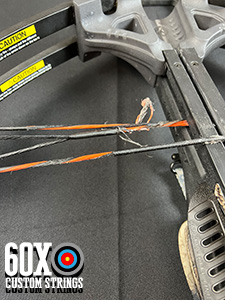
The above photo shows what can happen to bowstrings if a cable slide is not installed, and shots are fired from a crossbow.
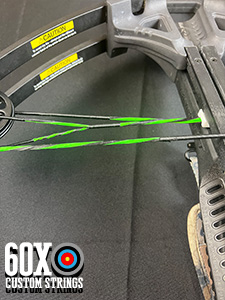
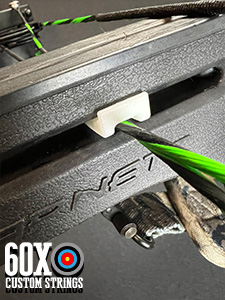
The above photos show new strings and a cable slide properly installed on a crossbow.
Direction of Installation
Most crossbow cable slides have offset cable grooves. This allows the cables to not press together as hard where they cross and in turn reduce friction and cable wear. This is another step to pay close attention to if you’re installing a cable slide yourself. Be sure to get the correct cable in the correct groove. On most of these bows the cables still make contact with each other, the slide is just reducing the amount of it. I have seen some that are not offset in which case the direction of the install doesn’t matter.
Crossbows Without Cable Slides
Now there are some models of crossbows that do not take a cable slide. Instead, these bows will have a very smooth machined slot in the barrel of the crossbow where the cables make contact or will have a piece of Teflon tape on the top side of the slot. If you’re unsure if your bow needs one or not, don’t hesitate to call the manufacturer to ask. The only other reason you’ll see a compound crossbow without a cable slide is if it has steel cables. This is common in slightly older bows and can be identified by the smooth plastic like coating on them.
Compound Bows and Cable Slides
On compound bows there are a couple different looking versions of cable slides. Some hold the cables on the inside of the cable rod and some on the outside. The outside ones are getting to be pretty old and not very common to see anymore, but it is worth mentioning. Slides on compound bows differ from crossbows in that they will have more offset between the 2 grooves. This ensures the cables never make contact with one another.
Worn Cable Slides
The biggest issue we see with compound cable slides are when they get worn. This is due to the fact that an old set of strings & cables is thinner than a new set of strings & cables. As a string ages the bundle of strands gets tighter and tighter together. If an old set is shot for long enough it starts to eat a new groove into the slide. You’ll be able to see what I’m talking about in the photo below. When a new set of strings is installed not all the strands will fit into that new groove the old string has created in the slide. This will chew up a new set of cables very quickly, so be sure to visually inspect your cable slide before you install a new set of strings to save yourself any trouble.
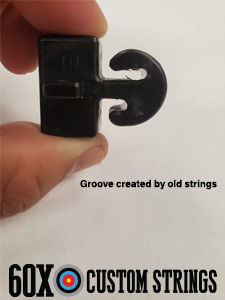
In the photo above you can see where the old strings ate a groove into the cable slide for a compound bow.
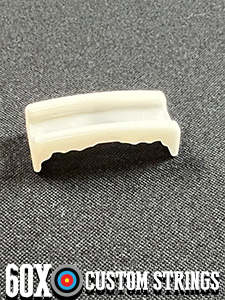
The photo above shows a cable slide for a compound crossbow.
Roller Systems
A lot of bows built today no longer have cable slides or cable rods and instead have what they call a roller. These roller systems have several variations, depending on the make and model, but all have solved most of the common issues seen with slides. The cables on a roller bow will be served where they contact the roller, unlike the unserved cables of a bow with a cable slide.
Protecting Your Bow Cables
Protecting the cables on your bow, whether compound or compound crossbow, with a cable slide, roller system, etc. is very important. Neglecting to do so can result in can result in trashed bowstrings in a matter of 5-10 shots. No matter what kind of bow you have, hopefully this post has shed some light onto the sometimes-forgotten world of cable slides.








